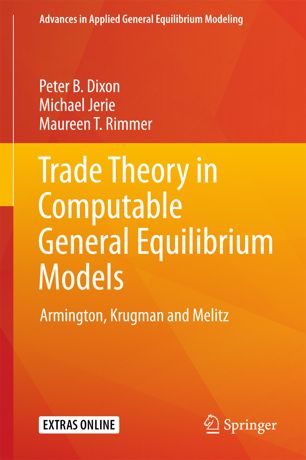

Most ebook files are in PDF format, so you can easily read them using various software such as Foxit Reader or directly on the Google Chrome browser.
Some ebook files are released by publishers in other formats such as .awz, .mobi, .epub, .fb2, etc. You may need to install specific software to read these formats on mobile/PC, such as Calibre.
Please read the tutorial at this link: https://ebookbell.com/faq
We offer FREE conversion to the popular formats you request; however, this may take some time. Therefore, right after payment, please email us, and we will try to provide the service as quickly as possible.
For some exceptional file formats or broken links (if any), please refrain from opening any disputes. Instead, email us first, and we will try to assist within a maximum of 6 hours.
EbookBell Team

4.7
106 reviewsThis book is for people who want to understand modern trade theory, particularly the Melitz model. It lays out Melitz theory from first principles and relates it to earlier theories of Armington and Krugman. For trade theory specialists, the book produces some significant conclusions. It identifies conditions under which Krugman and Melitz models produce essentially the same results for the welfare effects of trade liberalization as those obtained from Armington, and conditions under which this is not true. These findings will be of interest to academics and policy advisors who need to understand critiques of Armington by proponents of Krugman and Melitz.
For computable general equilibrium (CGE) modelers, the book shows how Melitz-style CGE models can be calibrated, solved and interpreted. A major practical contribution of the book is to show how large-scale Armington models such as GTAP can be converted to Melitz by the addition of a small number of equations and minimal alteration of the original Armington model.
The book describes computational experience in solving Melitz CGE models using GEMPACK software. This experience will be of interest to researchers currently attempting to solve Melitz-based CGE models. Almost all previous Melitz studies have used GAMS software. Authors of these studies have reported computational difficulties. These difficulties did not occur in this book’s GEMPACK-based computations.
The book concludes that: (a) CGE modelers can embrace Melitz while retaining their Armington-based models as powerful interpretive devices; and (b) via GEMPACK, large-scale CGE models incorporating Melitz specifications can be solved with no more difficulty than similar-dimensioned Armington models.